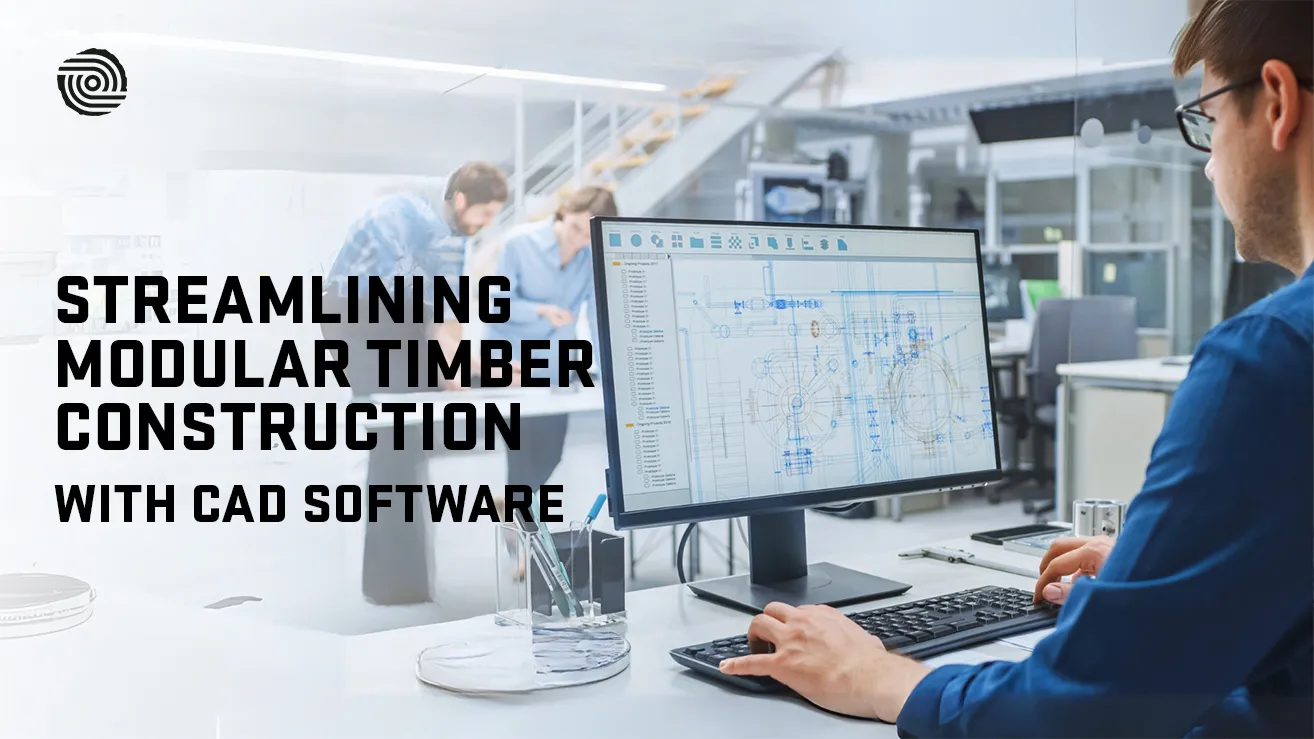

In contrast to traditional post-and-beam construction, which primarily occurs at the job site, modular timber construction utilizes off-site manufacturing facilities to construct prefabricated modules. These prefabricated structures are then transported to the job site to be set into their final positions.
Modules vary in complexity but commonly contain floor, wall, and ceiling elements, with some also featuring interior and exterior finishes, as well as plumbing and electrical elements. The benefits of modular timber construction include:
- Increased Speed and Efficiency – Modules will undergo fabrication and assembly off-site while foundation work for the building begins. The modules can be completed and ready for relocation to the job site as soon as they're needed.
- Sustainability – Off-site construction of the modules significantly reduces the waste material at the job site. Additionally, the precision in prefabrication minimizes scrap.
- Enhanced Quality Assurance – Fabrication of modules in a controlled manufacturing environment off-site facilitates multi-level inspections and quality monitoring. Also, the enclosed, environmentally controlled location will prevent weather-related material damage.
Incorporating CAD software into the process further increases the precision and efficiency of modular timber construction. CAD helps to ensure that modules fit seamlessly and reduces the risk of errors during on-site placement.
How CAD Software is Revolutionizing Efficiency in Modular Timber Construction
Modeling with CAD software helps define the exact dimensions, placement, and specifications of each timber module. 3D modeling and parametric design capabilities enable designers to test different module configurations without the need to create physical mock-ups. Therefore, changes can be implemented swiftly to avoid costly delays on-site. Additionally, automation features in CAD allow for recurring elements, such as specific joint types, to be standardized and placed throughout the drawing, which directly increases design speed.
Efficiency in modular timber construction was beautifully highlighted in the construction of the Ascent MKE Builing in Milwaukee, WI. CAD-based modules played a crucial role in this engineering feat, enabling the construction of the world's tallest mass-timber building. This construction used glue-laminated (glulam) timber columns for increased fire protection.
Enhancing Precision and Reducing Material Waste with CAD Tools
CAD's integration with CNC (Computer Numerical Control) machines and other automated manufacturing systems significantly increases module precision. The aforementioned compatibility enables the precise interpretation of dimensional CAD data to cut timber components according to specifications. This level of precision eliminates errors and reduces subsequent material waste.
The prefabricated modules arrive at the construction site ready for placement, with all pieces precisely prepared according to the CAD drawing. In addition to the reduction in physical material waste, greenhouse gas emissions can also be reduced.
Management of Carbon Footprint
California's first multi-story mass timber construction (1 De Haro) is a 134,000 sqft. mixed-use building. Manufactured from cross-laminated timber (CLT), this project is a living success story of modular timber construction. Tally, a tool available in Autodesk Revit, was used to assess the carbon footprint of the project. It was found that incorporating modular timber construction for this building resulted in savings of over 3,500 tons of CO2 compared to constructing the same building with steel and concrete. To put it in perspective, that would be the equivalent of removing 740 cars from the road for a year.
Accelerating Project Timelines through CAD-Based Workflows
The utilization of CAD tools, particularly in modular timber construction, streamlines the entire project workflow. This new age of construction eliminates several manual tasks that have historically created bottlenecks, thereby delaying project completion. Rapid prototyping and construction simulations can identify fit-up issues and inefficiencies in the construction process.
Modular timber construction projects have been completed with critical timelines in times of disaster. The Grosshof Asylum Centre in Kriens, Switzerland, was designed, manufactured, and constructed to serve as a multifunctional residential and utility building for over 100 refugees.
Efficiency in the design and manufacturing workflow, thanks to CAD integration with modular timber construction, led this life-saving project to a swift completion.
Facilitating Team Collaboration and Streamlining Communication with CAD Integration

CAD integration plays a crucial role in facilitating team collaboration across various projects. By creating a centralized digital model that all relevant personnel can access and modify, CAD removes any barriers between design, engineering, and manufacturing teams. The success of any project hinges on effective cross-functional communication and strong teamwork.
Some specific aspects of team collaboration with CAD integration include:
- Integrated design platforms such as building information modeling (BIM) tools can highlight material specs and load calculations.
- Change tracking documentation, which allows others to see real-time changes to the model and who on the team has made the changes
- Global team connectivity for teams with diversified international stakeholders.
An excellent example of this team collaboration is highlighted in the building of the Brock Commons Tallwood House at the University of BC in Vancouver. The virtual design and construction (VDC) modeler added to the project team worked closely with team members from the structural, trades, and management teams to ensure alignment between teams. The VDC modeler worked with cross-functional teams to ensure the proper placement of the features needed for necessary piping, shafts, and cabling. Installation simulations of the timber modules were reviewed by the project teams, and issues with construction and assembly were identified early, preventing time delays.
You may be interested in...








